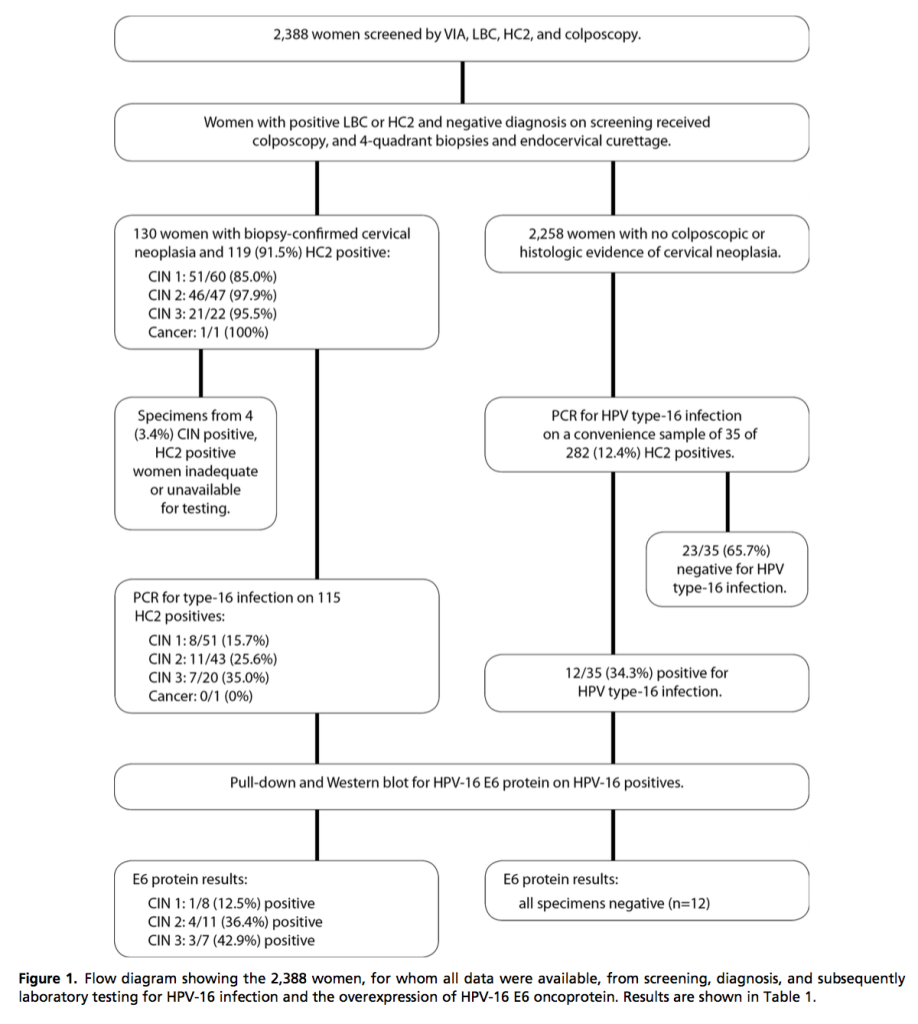
John W. Sellors, MD,1,2 Johannes G. Schweizer, PhD,3 Peter S. Lu, MD,3
Bin Liu, BS,4 Bernhard H. Weigl, PhD,1 Jian Feng Cui, BS,4 Roger B. Peck, BS,1
Kristen Lewis, MPH,1 Jeanette Lim, MPH,1 Michelle Howard, PhD,2 Charles W. Mahoney, BS,3 Linda McAllister, MD, PhD,3 Marthe Berard-Bergery, MS,3 Claire Bry, MS,3 Yassine A. Labiad, MS,3 Haimin Li, MS,3 Lilyn Liu, MS,3 Jon Silver, BS,3 Wen Chen, MD,4 and You Lin Qiao, MD, PhD4
1PATH, Seattle, WA; 2McMaster University, Hamilton, Ontario, Canada; 3Arbor Vita Corp, Sunnyvale, CA; and 4Cancer Institute, Chinese Academy of Medical Sciences, Beijing, China
Objective. To determine the expression of human
papillomavirus (HPV) type 16 E6 oncoprotein in cervical specimens of women with and without cervical intraepi- thelial neoplasia (CIN).
Materials and Methods. Cervical specimens from 2,530 unscreened women aged 30 to 54 years from Shanxi, China, were obtained. All women were assessed by liquid-based cytology, high-risk HPV DNA tests, and colposcopy with directed biopsy and endocervical curettage as necessary. Women with abnormal cytologic results or positive HPV DNA results were recalled for colposcopy, 4-quadrant cervical biopsies, and endocervical curettage. Women with biopsy-proven CIN and cancer and a convenience sample of HC2-positive, disease-negative women were tested for the presence of HPV-16 infection via HPV-16 E6 DNA-specific polymerase chain reaction. A PDZ interactionY mediated E6 oncoprotein precipitation method followed by E6-specific Western blot was performed on specimens from women with HPV-16 infections. Associations between elevated expression of E6 oncoprotein and CIN 2 and 3 were determined using logistic regression and a reference category of CIN 1 and disease-negative.
Results. A significant trend for the detection of HPV-16 E6 oncoprotein in specimen of women with proven HPV-16 infection was determined: 0% (0/12), 12.5% (1/8), 36.4% (4/11), and 42.9% (3/7) of those with negative findings, CIN 1, 2, and 3, respectively (p = .01). Compared with the category combining negative findings and CIN 1, detec- tion of E6 oncoprotein was associated with CIN 2 (odds ratio = 10.9, p = .05) and CIN 3 (odds ratio = 14.3, p = .04).
Conclusions. There is a significant association between elevated expression of E6 oncoprotein and grade of CIN. This finding seems consistent with the role played by E6 oncoprotein in carcinogenesis.
